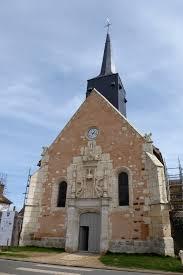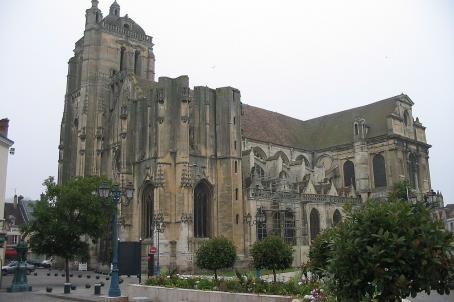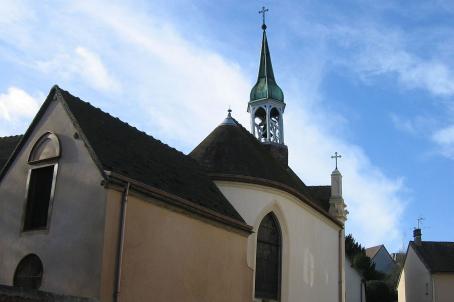Church of Notre-Dame
The Church of Our Lady of Boissy-en-Drouais was built in the twelfth century by William of Champagne, bishop of Chartres, and almost completely rebuilt in the fifteenth and sixteenth centuries in a Gothic style. At the time of the Revolution the church was stripped of furniture and rich ornaments. The church has a high bell tower and a nave, vaulted with painted shingles. Its large door is remarkably adorned with entablatures, columns and jambs surmounted by a shell, made of Paris stone.
About this building
Boissy-en-Drouais had, at the beginning of the ninth century, two churches: Saint Vincent and Saint Etienne, which depended on the abbey of Saint-Germain-des-Prés. Destroyed during the invasion of the Normans between 842 and 844, the church, which then took the name of Notre-Dame, was rebuilt in the twelfth century by William of Champagne, bishop of Chartres. It was then almost completely rebuilt in the fifteenth and 16th century in a Gothic style.
At the time of the Revolution, the church was stripped of its furniture and its rich ornaments, of which there remains almost only the pulpit (which is remarkable). With a steeple whose quadrangular base is surmounted by a full slate-covered spire and terminated by a cross 25 meters high, it forms a long parallelogram 30 meters wide. Its nave, vaulted with painted shingles, is illuminated by eight large ogival windows (15th century).
The exterior facade of the large entrance is remarkably adorned with entablatures, columns and jambs surmounted by a shell made of Paris stone. In 1793, this archway was badly damaged and the statue of Our Lady disappeared. A small sacristy leans against the north wall.






